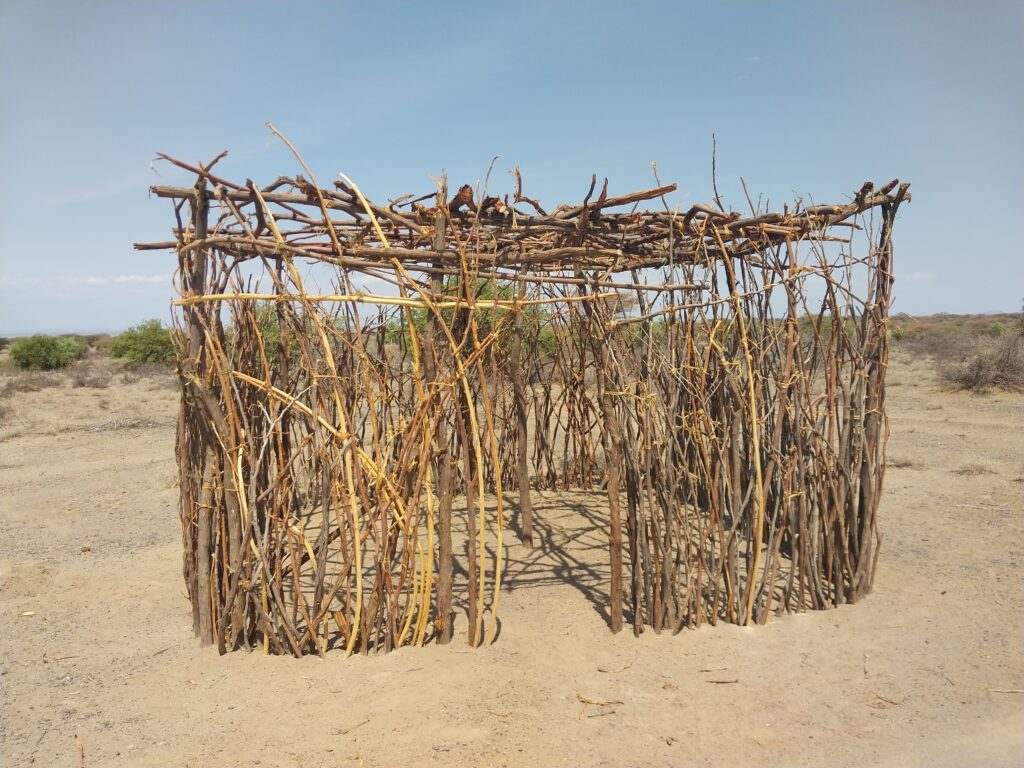In the arid landscapes of Turkana North, a remarkable story unfolds – a tale of innovation and determination in the face of resource scarcity. Nayanaeekabaran Dispensary, a small healthcare facility nestled in this challenging environment, has become a beacon of hope for healthcare delivery. It proves that a lack of resources need not hinder the provision of quality care.
Nayanaeekabaran Dispensary is a testament to human ingenuity and dedication. This facility serves a catchment population of 350 individuals, which might seem manageable elsewhere, but here, in the unforgiving terrain of Turkana North, it presents a significant challenge. Despite the odds, this facility offers a comprehensive range of services, including outpatient department services, maternal and child health, family planning, nutrition services, and maternity care, among other critical medical services. It is a lifeline for those who would otherwise be left without care.
The facility’s heart is its open-air Outpatient Department, where triage services take centre stage. With just one healthcare provider and a Community Health Worker, the facility efficiently manages a daily influx of patients ranging from 18 to 25 individuals. This innovative setup showcases the resourcefulness and unwavering dedication of the staff.

Maternity room/shelter
The most touching aspect of Nayanaeekabaran Dispensary is the maternity room, a testament to the facility’s unwavering commitment to maternal well-being in a region where conventional healthcare access is difficult. It’s a humble room, yet it provides expectant mothers with a safe and comfortable environment. Even in the face of limited resources, it ensures that mothers receive the care they need. A plaited mat acts as a maternity cot, demonstrating that innovative solutions can work wonders.
Nayanaeekabaran Dispensary represents a shining example of primary healthcare’s critical role in resource-constrained environments. Primary healthcare is the backbone of any healthcare system, and this facility is a living testament to its power. It delivers essential healthcare services that prevent the most common health issues, making it the first point of contact for individuals in the community.
Partnerships and collaborations are pivotal in improving healthcare, and Nayanaeekabaran Dispensary is a prime example. Through co-implementation, Amref’s USAID Imarisha Jamii, in close partnership with the Ministry of Health, provides ongoing support to ensure sustainable Reproductive, Maternal, Neonatal, and Child Health and Nutrition services. This partnership is a testament to the potential for progress when different entities come together for a common cause.
Witnessing the transformative power of creativity and dedication in healthcare delivery, Nayanaeekabaran Dispensary has been an eye-opening experience. It is a shining example of how human resourcefulness can transcend even the most challenging circumstances. In healthcare, data plays a critical role in informed decision-making. It informs the staff at this facility and promotes transparency and accountability within healthcare systems.
Nayanaeekabaran Dispensary serves as a reminder that even in the most challenging circumstances, innovative healthcare solutions are not just possible but necessary. The dedication of the healthcare providers and the power of human creativity can revolutionize healthcare services. This case demonstrates that, even in resource-constrained environments, visionary approaches and unwavering dedication can prioritize community health and well-being.
Nayanaeekabaran Dispensary’s example should inspire us all to embrace innovative healthcare solutions and support initiatives that prioritize health, no matter how challenging the circumstances. Let us learn from the dedication of this facility and work to ensure that quality healthcare reaches those who need it most. The healthcare community must be inspired to transcend resource limitations and make quality care accessible, even in challenging environments.
By Rose Betty Mukii, Amref Health Africa in Kenya
